Skip to content
2019
Space sector is key and strategical asset for Europe to face global challenges, which must continue to be developed to have a prominent role in the world, contributing to the independence security and prosperity of Europe. Since satellite payload RF components and systems are essential for delivering mission objectives and supporting ground equipment, new technologies and techniques are required to respond to emerging satellite applications and technology challenges. To this end, TESLA ETN (European Training Network) will create a multidisciplinary research environment to develop the Advanced Technologies for future European Satellite Applications. It will set up collaborations with senior staff in academic and industrial sectors to conduct top research into new and enabling technologies for satellite flexible payloads, big constellation systems, satellite high-speed communications and remote sensing, as well as large satellite platforms. TESLA will also implement a unique research program, with the objective to push the next generation of creative, entrepreneurial and innovative satellite communication developers, to enhance the European space economy and business through outreach activities for a wider economic and social impact.
Participating entities: Universidad Politécnica de Valencia (UPV), Heriot-Watt University (HWU), Universidad Pública de Navarra (UPNA), Christian-Albrechts-Universitaet zu Kiel (CAU), Kungliga Tekniska Hoegskolan (KTH), Technische Universitaet Graz (TU GRAZ), Universita degli Studi di Perugia (UNIPG).

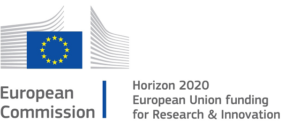
2018
SELECTOR project (funded as an H2020 Research and Innovation Action) is focused on the development of innovative passive components to increase the number of freely accessible space qualified passive components; thus, contributing to the European policy about “Reaching non-dependence in certain technologies that will open new markets to industries and will increase the overall competitiveness of the European Space sector”.
SELECTOR aims at developing Surface Mount Technology (SMT) compatible electromechanical switches for space sector high miniaturization. These devises called “Miniature Electro-Mechanical Relay” (MEMR), already exist for microwave industrial ground application like Automatic Test Equipment. SELECTOR will deliver MEMR as part of ESA portfolio European Preferred Part List (EPPL) so that this high integration, high performance passive component be available with non-restriction for the whole European industry. SELECTOR will also demonstrate a whole new approach of self-redundant microwave equipment called “Meta-equipment” based on microwave specific SMT board level assembly and MEMR components to minimize cost and improve integration. This demonstrator will address Very High Throughput Satellites (VHTS) emerging applications, where the new paradigm is the introduction of digital technologies dealing with very high number of RF chains. New evolution toward RF high power and high frequency capability will be implemented to open-up new sector of application within Space satellites (Navigation, earth observation), but also non-space sectors.
In the framework of this project, the GAM group is directly involved in the (theoretical and practical) evaluation of the new developed passive components in terms of high-power and high-frequency space applications.
Participating entities: Universidad Politécnica de Valencia (UPV), Radiall, Thales Alenia Space France (TASF), Centre Suisse d’Electronique et de Microtechnique SA (CSEM).


2020
The most relevant European satellite communication systems and applications are currently supporting a huge number of services of modern Digital Society. Among them, we highlight the global navigation system GALILEO, meteorological and Earth Observation programs like COPERNICUS, nanosatellites for scientific missions and big constellations of small satellites for implementing the upcoming “Internet of Satellites”, as well as large Telecommunication satellites in geostationary orbit. Thanks to these satellite payloads, many civil and military applications and a wide variety of sectors are being benefitted globally. With the aim of keeping the growing rate of such applications, all cited space programs are already deploying their future evolutions. Among them, one can find the Galileo second generation project, the next generations of meteorological (METEOSAT and METOP) satellites, the near future SENTINEL missions, the coming breed of small platforms for Starlink and OneWeb constellations, and the new large multi-beam space platforms operating in the millimetre wave (and sub-millimetre wave) frequency ranges (up to some terahertz). All these next-generation satellites will need more advanced communication payloads based on novel equipment with more stringent requirements. The main aim of this coordinated project is to address all identified challenges by designing novel passive components and antennas for next-generation satellite communication systems, including their prototyping and experimental validation. For that purpose, the four sub-projects will closely work on all available high-frequency technologies: i.e. more classical ones based on planar circuits and waveguides, more recent integrated planar waveguides with/without dielectric substrate, and the promising concept of gap waveguides. Advanced materials (such as bioplastics, artificial materials, liquid crystals, and also gallium nitride and graphene for terahertz frequencies), as well as manufacturing techniques (classical milling, 3-D fabrication methods, LTCC and micromachining processes), will be also investigated.
Participating entities: U.R.I. of Telecommunications and Multimedia Applications (ITEAM) of the Polytechnic University of Valencia (UPV), Department of Information and Communication Technologies of the Polytechnic University of Cartagena (UPCT), Department of Physics, Systems Engineering and Theory of Sign of the University of Alicante (UA) and the U.R.I. of Technologies, Construction and Telecommunications (ITCT) of the University of Castilla la Mancha (UCM). 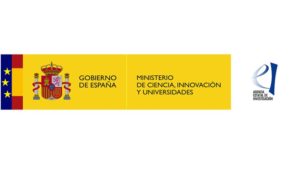
2019
Space communication systems, which currently operate in the lower microwave bands, provide key scientific, technological and social services, as well as critical security and defence applications. Since 2006, space communications offer broadband (10 Gbps), TV and video on demand, deep space communications and military applications. Today, the 2nd generation of Ka-band satellites, currently under development and with transmission rates greater than 100 Gbps, will be able to offer advanced mobile communications services, navigation and Earth observation systems, with huge civil, security and defence purposes.
To meet all these emerging applications, future satellites will incorporate new and advanced communications payloads, whose equipment and subsystems (passive components such as filters, with various responses and functions, diplexers and multiplexers, as well as antennas) will require technological specific solutions, better adapted to each specific scenario. Thus, this R&D project aims to offer solutions (through the design, implementation and experimental validation of specific technological demonstrators) to these great challenges in new high-frequency equipment (passive components and antennas) for future space applications. In order to achieve this, the most appropriate technologies (more classic ones such as planar and waveguides, or more recent ones such as the hybrid guided-planar SIW and its novel embodiments without dielectric substrate -ESIW and ESICL-, or guides with corrugated walls also known as groove gap waveguide), the materials (dielectrics, ferrites and liquid crystal) and novel manufacturing techniques (LTCC and additive manufacturing) will be considered in each application.
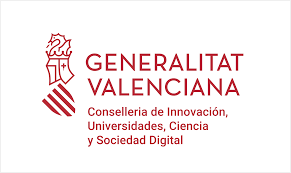
2021
El objetivo principal del proyecto InTEnSO es modificar sensores de fibra óptica con el fin de otorgarles mayor resistencia mecánica para su uso en condiciones de temperaturas muy altas y entornos que pueden ser agresivos. Dicho desarrollo debería ampliar grandemente el abanico de los usos posibles de los sensores de temperatura basados en fibras ópticas FBG y facilitar la democratización de dicha tecnología a nivel industrial.
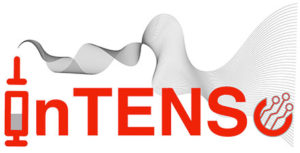 Para ampliar el rango de medida y la aplicabilidad industrial de los actuales sensores de fibra óptica, el proyecto InTenSO tiene por objetivo desarrollar un recubrimiento innovador que permite proporcionar una compatibilidad completa para trabajar en condiciones extremas, asegurando al mismo tiempo una resistencia química y mecánica mejorada y una flexibilidad adecuada, permitiendo también trabajar en entornos de altos niveles de intensidad de campos electromagnéticos.
El proyecto InTEnSO presentado conjuntamente por parte del Instituto de Tecnología Química (UPV/CSIC), liderado por el Pr Avelino Corma, y del Iteam (UPV), liderado por el Pr Salvador sales, ha recibido financiación de la Agencia Valenciana de Innovación (AVI) en el ámbito de su programa “Valorización y transferencia de resultados de investigación a las empresas” (ayuda INNVA1/2021/64).
Consulta la web del proyecto aquí.
Para ampliar el rango de medida y la aplicabilidad industrial de los actuales sensores de fibra óptica, el proyecto InTenSO tiene por objetivo desarrollar un recubrimiento innovador que permite proporcionar una compatibilidad completa para trabajar en condiciones extremas, asegurando al mismo tiempo una resistencia química y mecánica mejorada y una flexibilidad adecuada, permitiendo también trabajar en entornos de altos niveles de intensidad de campos electromagnéticos.
El proyecto InTEnSO presentado conjuntamente por parte del Instituto de Tecnología Química (UPV/CSIC), liderado por el Pr Avelino Corma, y del Iteam (UPV), liderado por el Pr Salvador sales, ha recibido financiación de la Agencia Valenciana de Innovación (AVI) en el ámbito de su programa “Valorización y transferencia de resultados de investigación a las empresas” (ayuda INNVA1/2021/64).
Consulta la web del proyecto aquí.

2020
2020-2021
This is a project to validate the capabilities of 5G technology in Valencia, Spain by testing 15 use cases that involve sectors of health, industry, energy, gaming, and tourism. Valencia 5G has a budget of 10,145,234 euros and involves Orange, Huawei, Arborea Intellbird, CFZ Cobots, Global Omnium Idrica, Etra Research, and Development, Red Eléctrica y de Telecomunicaciones Innovación y Tecnología and Robotnik. The project aims to contribute from three approaches: support the deployment of the first 5G networks in Spain; experiment with the network management techniques; and testing the main capabilities of the technology: ultra-reliable and low-latency communications; massive machine-to-machine communications; and extremely high speed and capacity mobile broadband. The MCG of the iTEAM will be involved in 5 out of 15 uses cases, being these: (1) Robotic Remote diagnostic. (2) Fleet management: Robotics Remote control of AGVs. (3) Robotics-Remote inspection and maintenance. (4) 5G Digital Contents. (5) Massive IoT for smart meters in supplies. The use case of robotic remote diagnostic for the skin cancer diagnostic using the 5G mobile communications network, consisting of a specialist will scan the patient remotely using robotic arms that have built-in biometric sensors that capture and process the information. On the other hand, the VLCCAMPUS-5G of the Universitat Politècnica de València, has been chosen as one of the testing scenarios.


2020-2021
AUDERE aims to design and develop an intelligent and innovative system for urban refuse collection y and last-mile delivery logistics. To fulfil this objective, a fleet of autonomous vehicles (autonomous mobile robots) are equipped with 5G connectivity to carry out last-mile delivery and urban waste container recovery tasks.
The AUDERE system will assess the technical, economic, social, and environmental viability in a range of use cases. Therefore, AUDERE will offer high-tech solutions to the growing forward and reverse logistics needs in our cities. Trials will be performed in two scenarios. The first one is the VLC-CAMPUS-5G of the Universitat Politècnica de València, which is equipped with the infrastructure of a private 5G mobile network that allows the validation of different use cases, such as logistics, automotive, industry, media, among others. In addition, among the main advantages of VLC-CAMPUS- 5G we can mention that it is a closed and controlled environment, which could be considered as a small city due to its infrastructure, commercial and sport places, banks, parks and where more than 20,000 people move daily. The second scenario is the La Pinada District, which is an eco-district, the first in Spain, that will integrate the principles of sustainable urban development, creating an attractive environment for family living, work, and enjoyment of nature. The results of this project will define new technological products that can be deployed in Smart Cities or Smart Quarters.

2019
2019-2020
The 5G-ROSE project worked towards the transmission of 5G broadcast services over SFN virtualized networks, using opensource software.
The project is very well aligned with the current trends in the world of 5G. On one side, the virtualisation of the 5G infrastructure, both core and RAN (Radio Access Network), allowing for different deployment architectures with maximum flexibility and scalability. On the other side, the adoption of so-called LTE-based 5G Terrestrial Broadcast mode, which is currently under standardization in 3GPP Release-16, and that will meet the requirements of broadcasters
for the distribution of media content in 5G.
5G-ROSE has made use of the virtualised IRIS testbed at Trinity College Dublin. The project has
used and contributed to the open source SDR LTE software suite srsLTE, offered by Software
Radio Systems. The 5G-ROSE project consisted of three clearly differentiated, but related,
broadcast experiments over a virtualised SDR (Software Defined Radio) access infrastructure.
The first experiment was the development and testing of the first virtualized Multimedia
Broadcast Multicast Service over Single Frequency Network (MBSFN) transmission. The second experiment dealt with the introduction of 5G physical layer Release (Rel)-16 specific components. The third part was about the combination of both unicast and broadcast transmissions by means of network slicing.
 This project has been funded by third Open Call for experiment of H2020 project Orchestration and Reconfiguration Control Architecture (ORCA)
This project has been funded by third Open Call for experiment of H2020 project Orchestration and Reconfiguration Control Architecture (ORCA)
2020
iNGENIOUS will exploit some of the most innovative and emerging technologies in line with the standardised trend, contributing to the Next-Generation IoT and proposing technical and business enablers to build a complete platform for supply chain management. iNGENIOUS embraces the 5G Infrastructure Association (5G IA) and Alliance for Internet of Things Innovation (AIOTI) vision for empowering smart manufacturing and smart mobility verticals. The iNGENIOUS network layer brings new smart 5G-based IoT functionalities, federated Multi-Access Edge Computing (MEC) nodes and smart orchestration, needed for enabling the projected real-time capable use cases of the supply chain. Security and data management are fully recognized as important features in the project. iNGENIOUS will create a holistic security architecture for next-generation IoT built on neuromorphic sensors with security governed by Artificial Intelligence (AI) algorithms and tilebased hardware architectures based on security by design and isolation by default. In the application layer, iNGENIOUS new AI mechanisms will allow more precise predictions than conventional systems. Project outcomes will be validated into 4 large-scale Proof of Concept demonstration, covering 1 factory, 2 ports, and 1 ship, encompassing 6 uses cases. iTEAM is the coordinator of the project, and the leader of the media use case.

 INGENIOUS has received funding from the European Union’s Horizon 2020 research and innovation programme under grant agreement No 957216
INGENIOUS has received funding from the European Union’s Horizon 2020 research and innovation programme under grant agreement No 957216
ITN-5VC aims to investigate how multi-band multi-antenna communications, including mmWave, could be integrated together with radar heads and other wireless sensors into the same telematics unit, so that transmission chains and radiation systems were reused using the same spectrum in an opportunistic manner. This idea has important implications in the design of the vehicle and its communications that will also be addressed in the project.
With this premise, the project aims to investigate the future C-V2X systems based on 5G NR and how to integrate them with autonomous driving sensor systems.
 This project has received funding from the European Union’s Horizon 2020 research and innovation program under the Marie Skłodowska-Curie grant agreement No. 955629.
This project has received funding from the European Union’s Horizon 2020 research and innovation program under the Marie Skłodowska-Curie grant agreement No. 955629.
FUDGE-5G will make a leap forward in realizing the notion of cloud-native 5G private networks by developing a further enhanced ServiceBased Architecture (eSBA) for both control plane and user plane with “decomposed” players of the ecosystem divided into: New Radio (NR) access network infrastructure provider, eSBA platform provider, mobile 5G Core (5GC) provider, vertical application orchestration provider and vertical service provider. The forward-looking FUDGE-5G architecture will also feature “allEthernet” 5GLAN (Local Area Network), 5G-TSN (Time- Sensitive Networking), 5G-Multicast and intelligent vertical application orchestration features. The proposed framework enables highly customized cloud-native deployment of private 5G networks. FUDGE-5G will accelerate the (inevitable) shift to a fully software-based 5G core network by offering a disintegrated environment where components, both in control and user plane, can be deployed anywhere as micro-services (i.e., edge, on premises and cloud),being agnostic to the underlying infrastructure. This softwarization exposing 5G NR HW to third parties will enable the usage of off-the-shelf commodity HW to deliver additional cost savings, faster deployments and ultimately greater adoption for private networks. iTEAM is the coordinator of the project, and the leader of the media use case.

 This project has received funding from the European Union’s Horizon 2020 research and innovation programme under grant agreement No 957242.
This project has received funding from the European Union’s Horizon 2020 research and innovation programme under grant agreement No 957242.






 Para ampliar el rango de medida y la aplicabilidad industrial de los actuales sensores de fibra óptica, el proyecto InTenSO tiene por objetivo desarrollar un recubrimiento innovador que permite proporcionar una compatibilidad completa para trabajar en condiciones extremas, asegurando al mismo tiempo una resistencia química y mecánica mejorada y una flexibilidad adecuada, permitiendo también trabajar en entornos de altos niveles de intensidad de campos electromagnéticos.
El proyecto InTEnSO presentado conjuntamente por parte del Instituto de Tecnología Química (UPV/CSIC), liderado por el Pr Avelino Corma, y del Iteam (UPV), liderado por el Pr Salvador sales, ha recibido financiación de la Agencia Valenciana de Innovación (AVI) en el ámbito de su programa “Valorización y transferencia de resultados de investigación a las empresas” (ayuda INNVA1/2021/64).
Consulta la web del proyecto
Para ampliar el rango de medida y la aplicabilidad industrial de los actuales sensores de fibra óptica, el proyecto InTenSO tiene por objetivo desarrollar un recubrimiento innovador que permite proporcionar una compatibilidad completa para trabajar en condiciones extremas, asegurando al mismo tiempo una resistencia química y mecánica mejorada y una flexibilidad adecuada, permitiendo también trabajar en entornos de altos niveles de intensidad de campos electromagnéticos.
El proyecto InTEnSO presentado conjuntamente por parte del Instituto de Tecnología Química (UPV/CSIC), liderado por el Pr Avelino Corma, y del Iteam (UPV), liderado por el Pr Salvador sales, ha recibido financiación de la Agencia Valenciana de Innovación (AVI) en el ámbito de su programa “Valorización y transferencia de resultados de investigación a las empresas” (ayuda INNVA1/2021/64).
Consulta la web del proyecto 


 This project has been funded by third Open Call for experiment of H2020 project Orchestration and Reconfiguration Control Architecture (ORCA)
This project has been funded by third Open Call for experiment of H2020 project Orchestration and Reconfiguration Control Architecture (ORCA)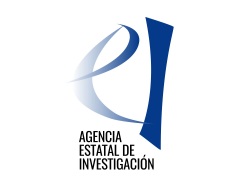

 INGENIOUS has received funding from the European Union’s Horizon 2020 research and innovation programme under grant agreement No 957216
INGENIOUS has received funding from the European Union’s Horizon 2020 research and innovation programme under grant agreement No 957216